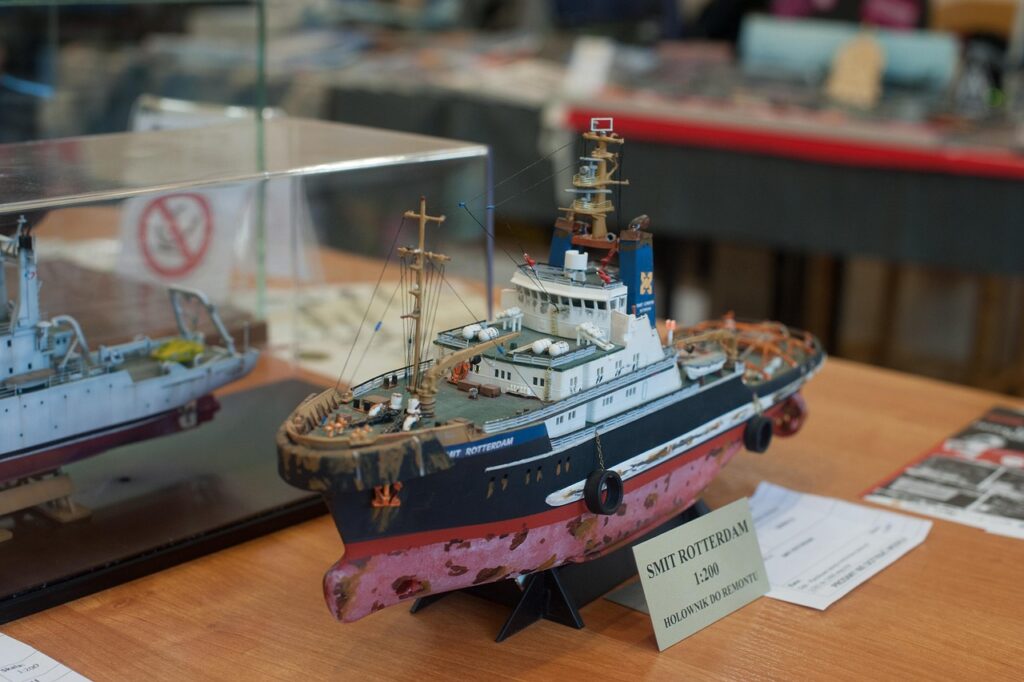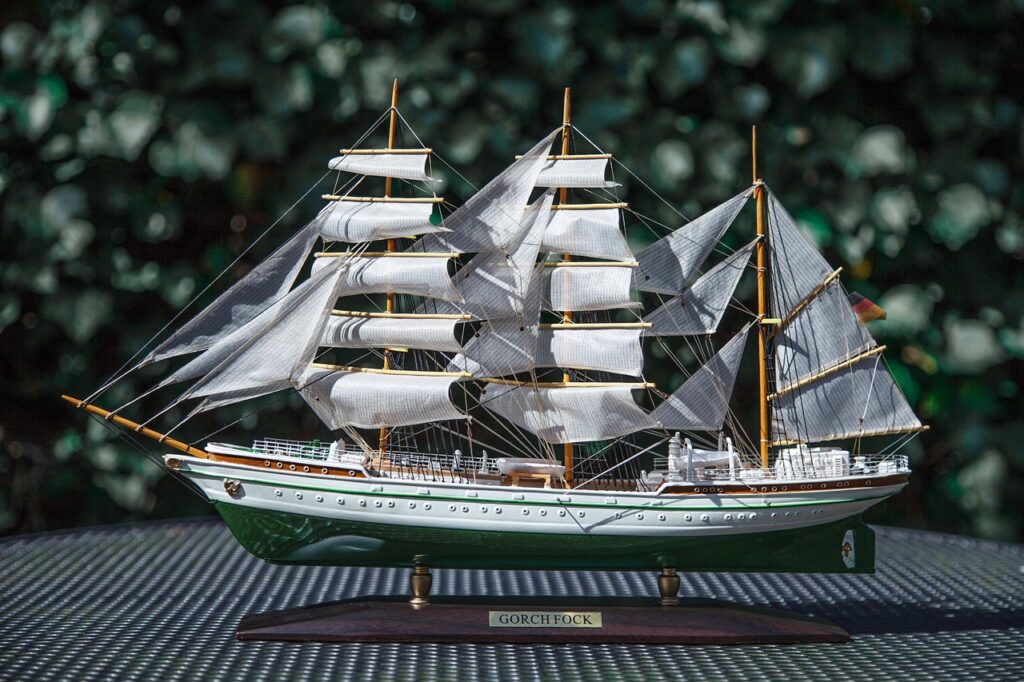Ship models have long been a source of fascination for both hobbyists and maritime enthusiasts. These detailed and intricate replicas capture the essence of ships, from their graceful hulls to their towering masts, serving as both educational tools and artistic expressions. Whether created for historical preservation, naval engineering study, or simply as a hobby, ship models provide an intimate glimpse into the world of seafaring and shipbuilding.

A Brief History of Ship Models
Ship modeling dates back centuries, with the earliest examples dating as far back as the ancient Egyptians. These early models, often found in tombs, were symbolic representations used to accompany the deceased into the afterlife. As time progressed, ship models evolved, primarily becoming tools for naval architects and shipbuilders to test designs and concepts before constructing full-size vessels.
By the 17th and 18th centuries, ship models became more widely recognized as a form of craftsmanship and art. This period saw the rise of shipbuilding as an industry, with many naval and merchant ships being meticulously replicated as models, often for display purposes. These models not only served to showcase the builder’s skill but also provided insight into the advancements in ship design.
During the Age of Sail, model ships became increasingly sophisticated, with highly detailed representations of various types of vessels, from simple fishing boats to complex warships. The rise of industrialization in the 19th century further refined ship modeling techniques, introducing mass production methods and standardized designs.
Image Source – https://pixabay.com/photos/woman-retro-vintage-hat-veil-8037643/
Today, ship models can be found in museums, historical collections, private collections, and among enthusiasts worldwide.
Types of Ship Models
Ship models vary widely depending on their purpose, materials, and scale. Here are some of the most common types of ship models:
- Static Display Models
These models are designed primarily for visual representation and are often displayed in museums or private collections. They focus on accuracy and detail, representing ships in a way that reflects their historical significance or technical features. Static models are not intended for operation or movement, though they may be incredibly detailed, with features such as miniature rigging, decks, and lifeboats. Some examples include models of historical ships like the HMS Victory or Titanic.
- Radio-Controlled Ship Models
Radio-controlled (RC) ship models are designed for more interactive experiences, where hobbyists can control the movement of the model using remote controls. These models can range from small boats to large, ocean-going vessels. RC ship models are often built with functionality in mind, including motorized parts, steerable rudders, and working sails. Some enthusiasts even build their models to scale, replicating real-world ocean liners or military ships.
- Model Kits
Model kits are pre-packaged collections that hobbyists can assemble themselves. These kits come with all the necessary materials—wood, plastic, metal parts, and instructions—to create a specific ship model. Depending on the kit, they may be designed for beginners or advanced modelers, with varying levels of detail. Well-known manufacturers, such as Revell, Tamiya, and Amati, produce high-quality ship model kits that allow hobbyists to build everything from ancient warships to modern naval vessels.
- Wooden Ship Models
Wooden ship models are perhaps the most traditional and revered form of ship modeling. Crafted from various types of wood, these models emphasize craftsmanship and attention to detail. They can be either hand-built from scratch or assembled from kits. Wooden ship models often feature intricate carvings and fine details, showcasing a high level of artistry. These models typically represent historical ships, such as pirate ships, naval vessels, and merchant ships.
- Plastic Ship Models
Plastic models are a popular choice for hobbyists due to their relative ease of assembly and versatility. These models are made of injection-molded plastic and can range from simple designs to highly detailed representations of famous ships. While plastic models may not have the same level of craftsmanship as wooden ones, they can be painted and customized to add intricate details, making them an excellent choice for model enthusiasts.
Image Source – https://pixabay.com/photos/model-boat-drink-ship-model-2123763/
The Art and Science of Ship Modeling
Ship modeling combines both artistry and technical precision. Models are built to scale, and the accuracy of the ship’s design, proportions, and features is crucial. For example, a scale model of a 19th-century clipper ship might be built at 1:100, meaning that every inch of the model represents 100 inches of the actual ship. This scale provides an in-depth look at the details of the vessel, including rigging, sail arrangements, and hull structure.
Some models are made with advanced techniques such as 3D printing, allowing for even greater detail and customization. However, traditional methods like hand-carving wooden parts, sewing sail cloth, and crafting tiny metal fittings are still prevalent among dedicated modelers.
Why Build Ship Models?
There are several reasons why people pursue ship modeling, from historical interest to the joy of craftsmanship. Here are some key motivations:
- Historical Interest: Many ship modelers are passionate about maritime history and use their models as a way to preserve and showcase iconic ships and naval heritage.
- Skill Development: Ship modeling is an excellent way to develop fine motor skills, patience, and attention to detail. The complexity of building a model ship from scratch requires significant concentration and effort.
- Artistic Expression: For many, ship modeling is a form of artistic expression. Crafting a beautiful ship model can feel like creating a miniature masterpiece, with each element carefully sculpted and painted.
- Community: Ship modeling has a global community of enthusiasts who share tips, techniques, and advice. Model ship clubs, conventions, and online forums allow hobbyists to connect and showcase their work.
Ship models are a fascinating blend of history, craftsmanship, and artistry. From static display pieces to functional, radio-controlled ships, these models offer a window into the rich world of maritime culture and the engineering marvels that have shaped our world. Whether as a hobby, a method of historical preservation, or an artistic endeavor, ship modeling continues to captivate and inspire people of all ages.

For those interested in building their own ships, the possibilities are endless—from creating a scale model of an ancient Viking longship to replicating a modern naval destroyer. Whatever the approach, ship models serve as both a tribute to our seafaring past and a celebration of human ingenuity and creativity.
For enthusiasts seeking high-quality models, Premier Ship Models offers a wide range of expertly crafted ship models, from historical vessels to modern marvels, catering to both collectors and hobbyists. Known for their attention to detail and dedication to maritime authenticity, they provide handcrafted pieces as well as custom-made models tailored to individual preferences. With a commitment to preserving the artistry of ship modeling, their museum-quality representations make the history and beauty of seafaring accessible to all.




